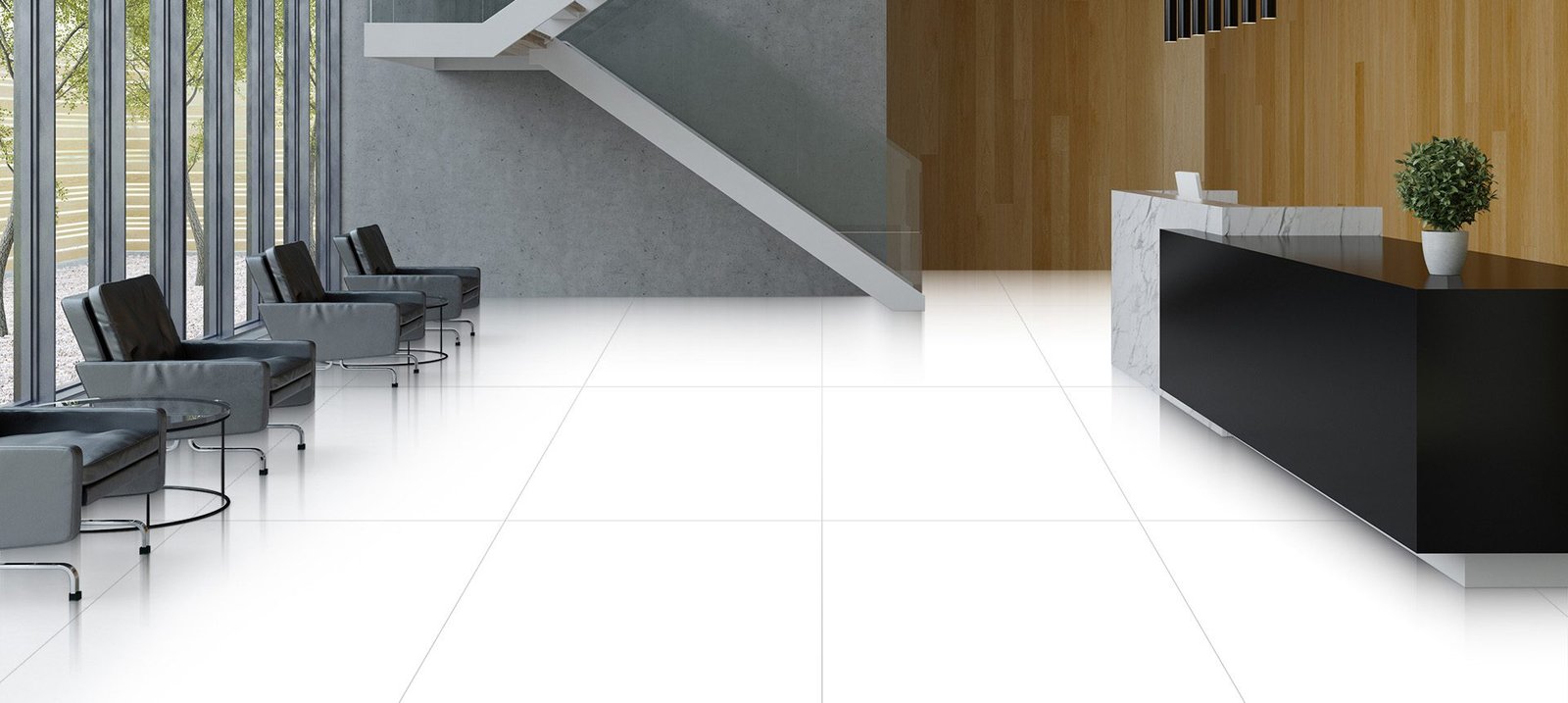Step 1: Mix Vinegar and Water
Step 2: Mop The Floor Thoroughly
Step 3: Rinse The Floor By Mopping It With Plain Water
Step 4: Sprinkle Baking Soda On The Floor To Get Rid Of Smells
Step 5: Mop The Floor With Vinegar And Water Solution To Clean It
Step 6: Flush The Floor With Water To Remove Residue
Step 7: Clean, Rinse, And Allow Each Portion Of The Floor To Dry Thoroughly

Floor: RP1017 Lea Blanco
It is important to repair or replace any scratches on porcelain tiles as soon as possible to prevent any further damage. Also, regularly cleaning the tiles as instructed above will add to the durability of the porcelain for years to come. It is always a good idea to seal any grouts or joints to maintain the quality of porcelain tiles even further.
Also, placing a rug in front of entrances can help protect the tiles from any damage shoes might cause. Rugs or mats can be seen as an excellent prevention method because the fewer rugs there are to protect the tiles, the more damage will be caused by foot traffic.
Some household members will use vinegar to clean porcelain tiles. However, experts suggest this is not a good idea because vinegar has a high acidic content which can damage the quality of the porcelain. It is best to avoid vinegar to retain the durability of decorative porcelain tiles in the home.
Another important part of maintenance is avoiding water spots. Having water stains for an extended time can damage the quality and make the tiles appear less shiny. One way to ensure avoiding water spots is to dry the whole floor or countertop after washing it with any liquids. Also, any accidental spills should be cleaned up right away.
It is important to note that the chemicals recommended to clean porcelain can be harmful to some individuals. It is essential to wear protective gloves and masks if possible when cleaning these porcelain tiles. Furthermore, if the individual cleaning noticed any adverse reactions to their body and health, they should report to the nearest emergency room.